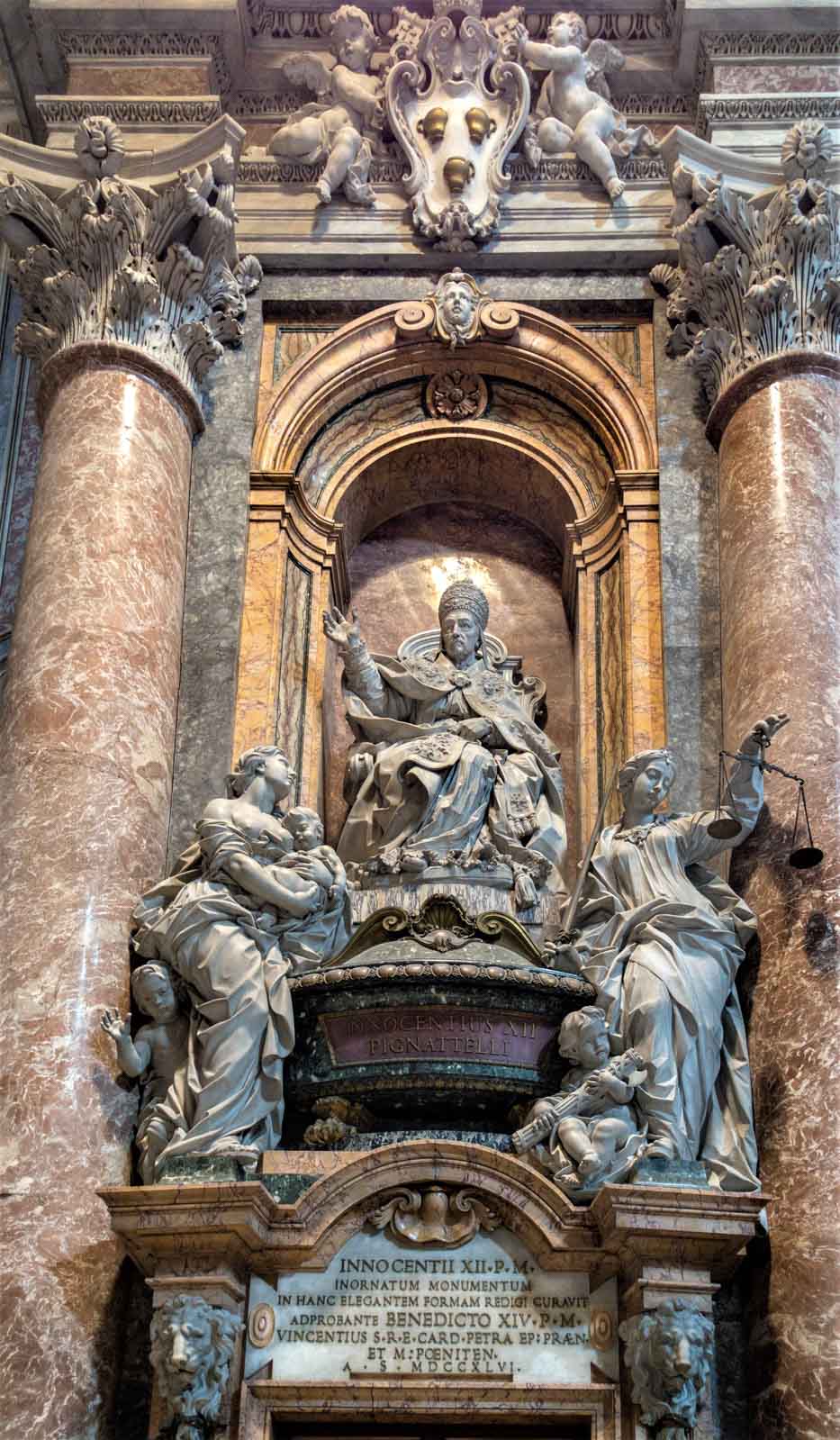
POSTACIE Popes and their associates
Pope Innocent XII (1615–1700) – an exemplary shepherd and a protector of castrates

In this regard the pope was a continuator of the work of his predecessor Innocent XI. Just as he had done previously, the new pope fought against (albeit unsuccessfully) gambling, including the popular lottery and card games; he limited to a minimum the ever-popular carnival parties. He cared for the morale of women, encouraging them to cover their necklines, he also forbade them from attending theatre and acting on the stage. Their roles were from now on to be taken over by castrates. He tried to bring discipline to male convents, however, this met with great resistance.
He was buried in St. Peter’s Basilica (San Pietro in Vaticano). His tombstone, which was far removed from the monumental statues of his predecessors, was created by Filippo della Valle. Lack of space and putting the tombstone high above the door caused the composition to be crammed and thus it lacks perspective. The pope depicted in a gesture of blessing, is accompanied by two figures: Mercy (with an uncovered chest) and Justice – in this case the sculpture does not fully correspond with the qualities of the character of the deceased.
Structures and buildings created at the initiative of Innocent XII:
Może zainteresuje Cię również
Christina of Sweden (1626–1689) – a significant, yet cumbersome papal guest
Zgodnie z art. 13 ust. 1 i ust. 2 rozporządzenia Parlamentu Europejskiego i Rady (UE) 2016/679 z 27 kwietnia 2016 r. w sprawie ochrony osób fizycznych w związku z przetwarzaniem danych osobowych i w sprawie swobodnego przepływu takich danych oraz uchylenia dyrektywy 95/46/WE (RODO), informujemy, że Administratorem Pani/Pana danych osobowych jest firma: Econ-sk GmbH, Billbrookdeich 103, 22113 Hamburg, Niemcy
Przetwarzanie Pani/Pana danych osobowych będzie się odbywać na podstawie art. 6 RODO i w celu marketingowym Administrator powołuje się na prawnie uzasadniony interes, którym jest zbieranie danych statystycznych i analizowanie ruchu na stronie internetowej. Podanie danych osobowych na stronie internetowej http://roma-nonpertutti.com/ jest dobrowolne.